Knowledge base software
Get ready to create, organise and share knowledge base articles and content easily with customer support agents, select customers or the public and measure what performs best.
Last updated November 29, 2023
A guide to the best knowledge base software
Knowledge base software is increasingly vital to the modern customer service team’s ability to deliver excellent service. But no two teams are exactly alike.
And what makes one system the best knowledge base software for one team does not always translate for others. So the onus is on you and your team to decide which tools are the best fit for your customers and business.
To help you with that, we will start with the basics of knowledge bases: what they are and how to create one, as well as their top benefits and essential features. Then we will overview 13 of the best available knowledge base systems.
To wrap up, we will walk through how to think about choosing the ideal knowledge base software for your organisation.
Feel free to skip around by clicking through the table of contents below:
- What is a knowledge base?
- How do you create a knowledge base?
- What are the benefits of knowledge base software?
- What are the essential features of a knowledge base software?
- Types of knowledge management tools
- Popular knowledge base templates
- Top 13 knowledge base software
- A summary of top 13 knowledge base software
- How do you choose the right knowledge base software?
- Frequently asked questions on knowledge base software
- Try knowledge base software for free
What is a knowledge base?
A knowledge base is a searchable directory of content about your products or services and how they are used. Knowledge bases include content in various formats that answers common customer questions and helps customers troubleshoot problems. Many teams also use knowledge bases internally to help employees find the information they need quickly.
What is the purpose of knowledge base software?
The purpose of a knowledge base software is to provide information that will enable your customers to have a better experience using your software or product. Knowledge base software also makes agents more efficient by providing customers with self-service options for simple tasks.
How does knowledge base software work?
The most basic knowledge base software works by helping you organise your institutional knowledge and put it to work as useful content in a searchable database. More advanced systems take it a step further using automation and machine learning to automatically offer relevant articles from the database in response to customer enquiries.
Typically, knowledge base software is configurable so your database is private, public or a bit of both. Private databases are only accessible by logged-in users. Public ones are accessible by anyone via search engines. And a database that is both public and private would have some content only available to logged-in users and some content available to everyone.
What types of data are provided in a knowledge base?
A knowledge base can offer users a wide range of information. For customer-facing knowledge bases, the data can include:
- FAQs
- Troubleshooting guides that feature detailed steps toward resolving issues
- Onboarding flows that help customers
- Product and service descriptions to give potential clients a clear understanding of your company’s features
For internal knowledge bases, which employees use to get their work done, data can cover a huge range of subjects.
- Support teams can use knowledge bases to document problem-solving, so agents do not have to reinvent the wheel. A knowledge base is also a great way to keep track of best practices and other team information.
- Product organisations can lean on a knowledge base to prioritise and track feature requests and document product development.
- A knowledge base is a handy tool for human resources departments to communicate essential internal information to employees, such as company policies, holidays and best practices.
What is the difference between a database and a knowledge base?
Think of it like this: a database stores raw data, whereas a knowledge base is a curated collection of articles that serve helpful information to users in the form of articles. A knowledge base, unlike a database, makes it very easy to access and digest information about specific topics and problems.
Why is knowledge base software important for your business?
Knowledge base software, both external and internal (customer-facing or for employees), are crucial to your business. One of the biggest issues companies face is siloed information, in other words, data that is known by just one team or often just one person. Without access to that data, a business cannot function optimally, especially if knowledgeable employees leave the company.
A well-managed internal knowledge base can make every part of your business run better. Customer support will be able to access and create content that boosts efficiency and results in better outcomes for consumers; product development can use the knowledge base to track feature requests, common customer complaints, and information about legacy code; and human resources can use the base to keep employees informed.
Meanwhile, an external knowledge base software that your customers can access provides essential self-service options. Most customers prefer to solve problems on their own rather than contact customer support, and a knowledge base serves this purpose quite well. From onboarding customers to your product or service to pages that explain your offerings to potential clients, a knowledge base can set your business up for success.
How do you create a knowledge base?
The size of your team, the type of your business and whether you are creating internal or public-facing content affect how you create a knowledge base.
That said, having helped thousands of Zendesk users create their knowledge bases, we have a few best practices you can follow:
Assign ownership of the knowledge base
Whether their sole job is managing the knowledge base or they wear many hats, you need one person to take the lead on the KB. This person’s job is to be the contact for the team and oversee content creation. The KB owner should also regularly monitor and check the list of issues that need KB documentation.
This helps ensure that new content is created promptly and that existing content is up-to-date. In Zendesk’s knowledge base, KB owners can use views to get a snapshot of KB issues. They can then prioritise, schedule and assign content accordingly.
Having a KB owner is also a great way to make sure that your content is consistent and thorough.
Establish a process for identifying knowledge base issues
Since support agents deal with customer issues firsthand, they are an invaluable source of insight into what should go in the knowledge base system. So it is key to create a process for agents to flag issues that require new or updated documentation.
At Zendesk, our Support team uses a specific tag to flag tickets with issues for the KB.
If you choose to implement this kind of workflow, remind your agents to search the existing documentation to avoid creating multiple versions of the same issue. When there is existing content, the agent should check to see if it needs updates or improvements and flag it if so.
After a while, this will become a standard support process, and agents will naturally identify content needs according to demand.
Designate writers for your KB
Creating KB content has to be a priority and part of the regular responsibilities for specific people or a group. But if you do not designate writers for your knowledge base, no one will write.
Who you designate depends on the nature of the content in your knowledge base and your available resources. Some teams hire dedicated technical writers to create their content while others designate members of the support team. Other teams might have subject matter experts or even support agents as their writers.
Whoever you choose, they do not have to have "writer" in their titles. But regularly updating the knowledge base should be part of someone’s regular job duties.
Establish editorial standards and processes
Regardless of who is creating the content, knowledge base articles must be clear, concise and consistent. But consistently clear and concise content does not happen without a solid editorial process. So you will need a set of editorial standards and processes to ensure that your content meets certain quality requirements.
Here are a few best practices to incorporate into your processes:
- Develop a template for your articles with designated sections to fill in so that authors include the right information.
- Link-related articles to show relationships and help users find all the information they need to solve their problems.
- Define terms and jargon or point users to a glossary that defines key terms for your product or business.
- Schedule an SME(s) to review articles for accuracy and thoroughness.
What are the benefits of knowledge base software?
Consolidating your institutional knowledge in a single database accessible from anywhere on the internet is a major competitive advantage.
Here are the top four benefits that knowledge base systems provide:
Enhances customer experience
The 2020 Zendesk Customer Experience Trends Report confirmed that customers value self-service as essential to a good customer experience. While this is not particularly surprising, since we have known that customers prefer to self-serve for simpler tasks, such as changing their password, it does indicate what customers want. And in this way, through self-service, knowledge management systems directly improve the customer experience.
Improves agent efficiency
With a well-organised IT knowledge base, agents can quickly find resources relevant to their customers’ problems. And when integrated with chatbots, knowledge bases can answer questions automatically, reducing the time agents need to spend on simple, repetitive issues. Plus, knowledge bases provide additional context that allows agents to better assist customers one on one. In short, knowledge management software makes customer support agents more productive.
Breaks down internal silos
Think of every time you contacted someone within your company for information. Now think about how much easier it would be if you could find that info yourself. Not only does a self-service option save you time, but it also saves your colleagues time. This is what an internal knowledge management system provides because it surfaces information throughout the organisation, across teams and geographies.
Always time for information
Since a knowledge base is always on, you can provide your customers, users or employees with the information they want, when and where they want it. This enables your users to get help and support from your company even during holidays and off-hours. And assuming your system includes access rules, you can decide which users can access information in your knowledge base.
What are the essential features of a knowledge base software?
The basic function of knowledge base software is to make it easy for support teams to create and share useful content with their customers. As simple as that sounds, there are several essential features involved in this basic function.
To help you compare different tools, here are five critical features of knowledge base software:
Search engine
While it is important to curate well-structured categories of information in your knowledge base software, most people will not use your categories. Instead, they will use your search bar. If yours is not intuitive or does not surface the information your customer needs, they are more likely to leave or submit an unnecessary support ticket.
Feedback and analytics
The best knowledge base software does not just help your customers learn about your product or service. Through feedback mechanisms and content analytics, knowledge base systems also help your support agents and managers learn how your customers use your product. If your software does not have built-in analytics or feedback, check to see if it integrates with apps that provide those features. Without feedback and analytics, you will lose the chance to improve your knowledge base content and your customer service, over time.
Content management
Content management features are the ones your writers, editors and administrators use to create, revise, schedule and publish content to your knowledge base. Because so many different people rely on these features to create knowledge base content, your software’s content management must be intuitive. After all, the easier it is to create, update and manage content, the more likely your team will actively manage your KB content.
Artificial intelligence and machine learning
Knowledge base software solutions equipped with machine learning get smarter with time, improving the quality of the automatic responses served up with AI. Other technologies streamline the maintenance and upkeep of the knowledge base, prompting contributors to update articles, fill knowledge gaps or verify content’s accuracy and relevance.
How these technologies continue to enhance KBs remains to be seen. What is certain is that AI and machine learning are essential technologies for modern knowledge base tools.
Self-service portal
Changing a password or printing a return label should not require one-on-one support. But without a self-service portal, your agents will be forced to field questions and deal with issues that could have been easily resolved by the customer on their own. So if you opt for a knowledge base system without a self-service portal, keep in mind that you will lose out on many of the time-saving, service-enhancing benefits of self-service.
Types of knowledge management tools
As it relates to customer service, there are three types of knowledge management systems: knowledge bases, community forums and AI-powered bots. Though it is not always the case, modern knowledge management software often offers a combination of one or more of these systems.
Knowledge base
A knowledge base like Zendesk's organises a variety of information, such as FAQs, product details, policies and more, and provides that information in a centralised, searchable database.
When combined with AI-powered bots, knowledge bases become even more powerful because the bots help serve up relevant articles to customers’ queries. This helps the knowledge base do even more heavy lifting because bots help customers solve their own problems.
Community forum
A community forum is a kind of knowledge management system that creates a space for customers to interact and support each other. If you have ever used a popular forum like Reddit or Stack Overflow, you are already familiar with the format of this system. Customers create threads by posting questions and other customers and moderators respond with solutions to the problems.
Community forums also double as a great place for businesses to glean organic customer feedback or identify new issues for their knowledge base. In this way, forums and knowledge bases can work together to help customers self-serve.
AI-powered bots
AI-powered bots like Zendesk's Answer Bot enable support teams to distribute their knowledge base content in more context-relevant ways. For example, you could set up an AI-powered chatbot on your pricing page that provides options for customers to dig into the knowledge base for more details about your pricing policies. And, as mentioned above, AI-powered bots make knowledge bases even more useful by automatically pulling in articles that are most relevant to a customer’s question.
Popular knowledge base templates
The first thing you should know is that your business will most likely need to use a mix of templates for your knowledge base. The main goal is to provide information that both helps your customers solve issues on their own while being easy to find.
Below are four popular knowledge base article templates:
-
FAQs
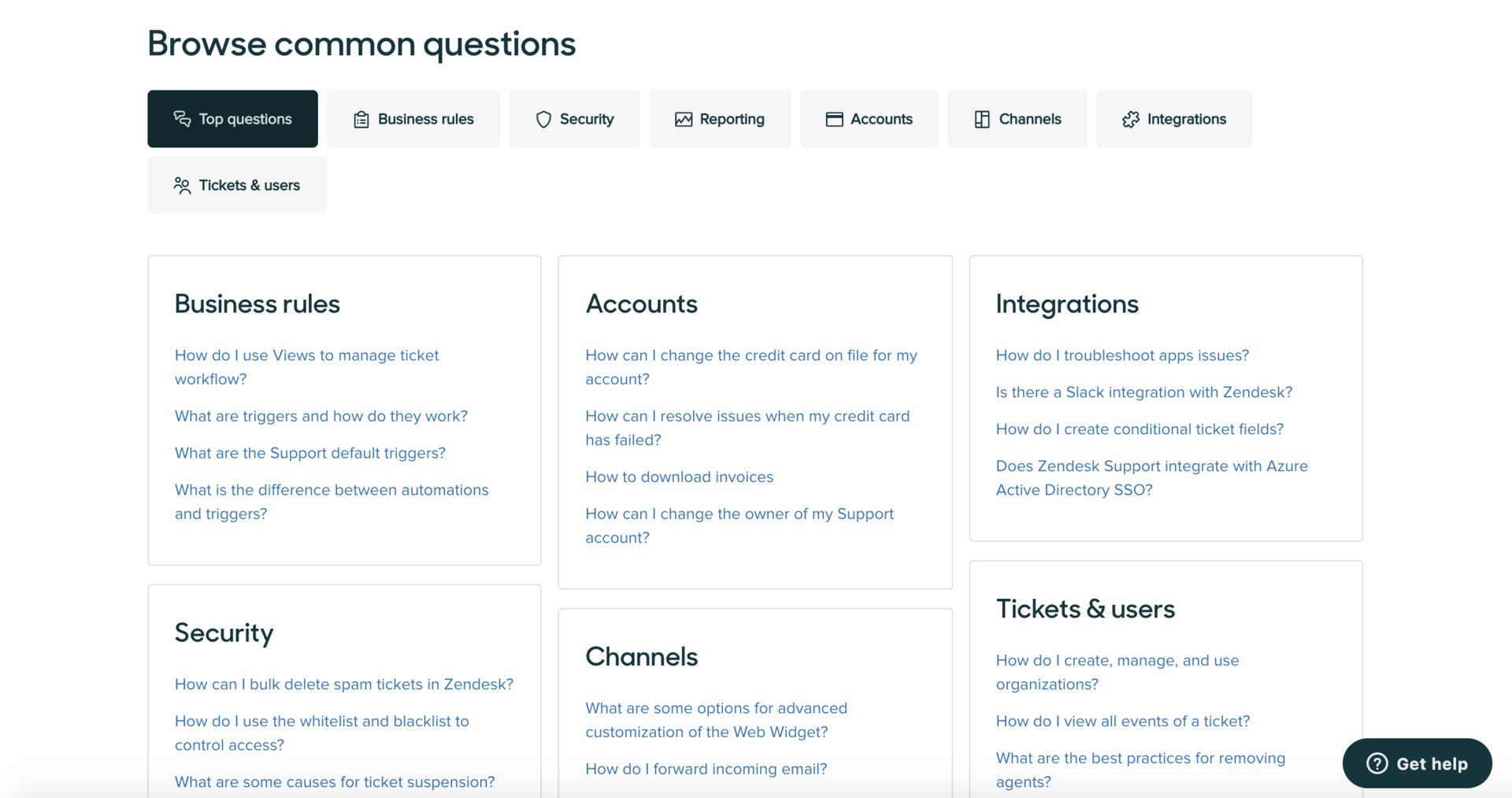
This is one of the most common and effective knowledge base templates you can use, simply because it provides readily accessed answers to common questions. It is an essential knowledge base template because it both enables customer self-service while capturing information that’s easily consumed. That means massive time savings for customers, who can answer their own questions, and also for customer support agents, who can direct customers to existing documentation quickly and efficiently. The structure of an FAQ knowledge base template allows topics to be set up as articles, a database of information that your support team can expand on over time.
- Product and service descriptions
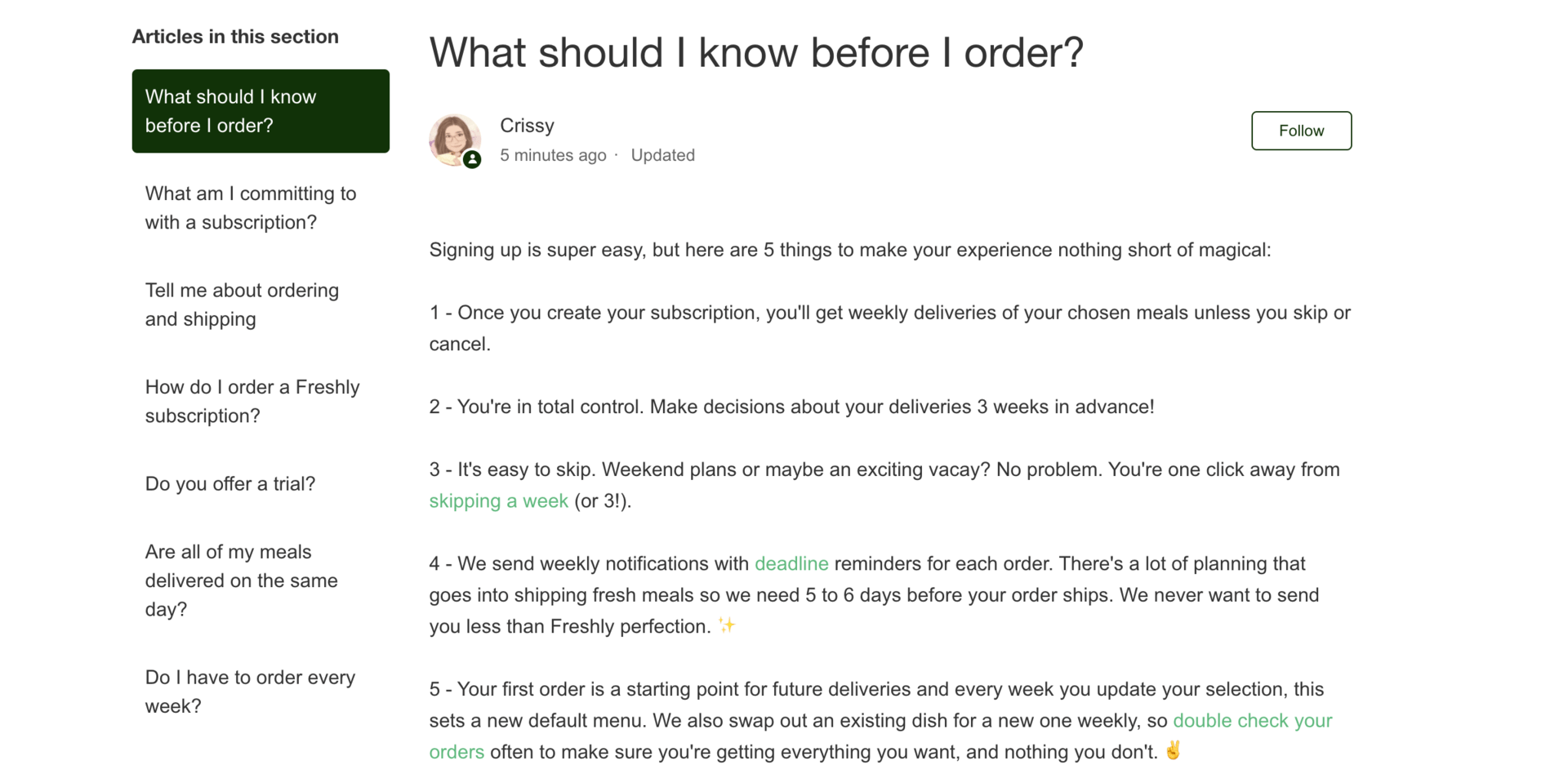
No matter the business, customers are going to have questions about how your product or service works. Similar to an FAQ, this template lays out clearly what customers can expect from your business, a key part of convincing potential clients to become actual customers. This template tends to have longer, more in-depth content and should be set up for maximum SEO results so the information gets to future customers as easily as possible.
- Onboarding flows
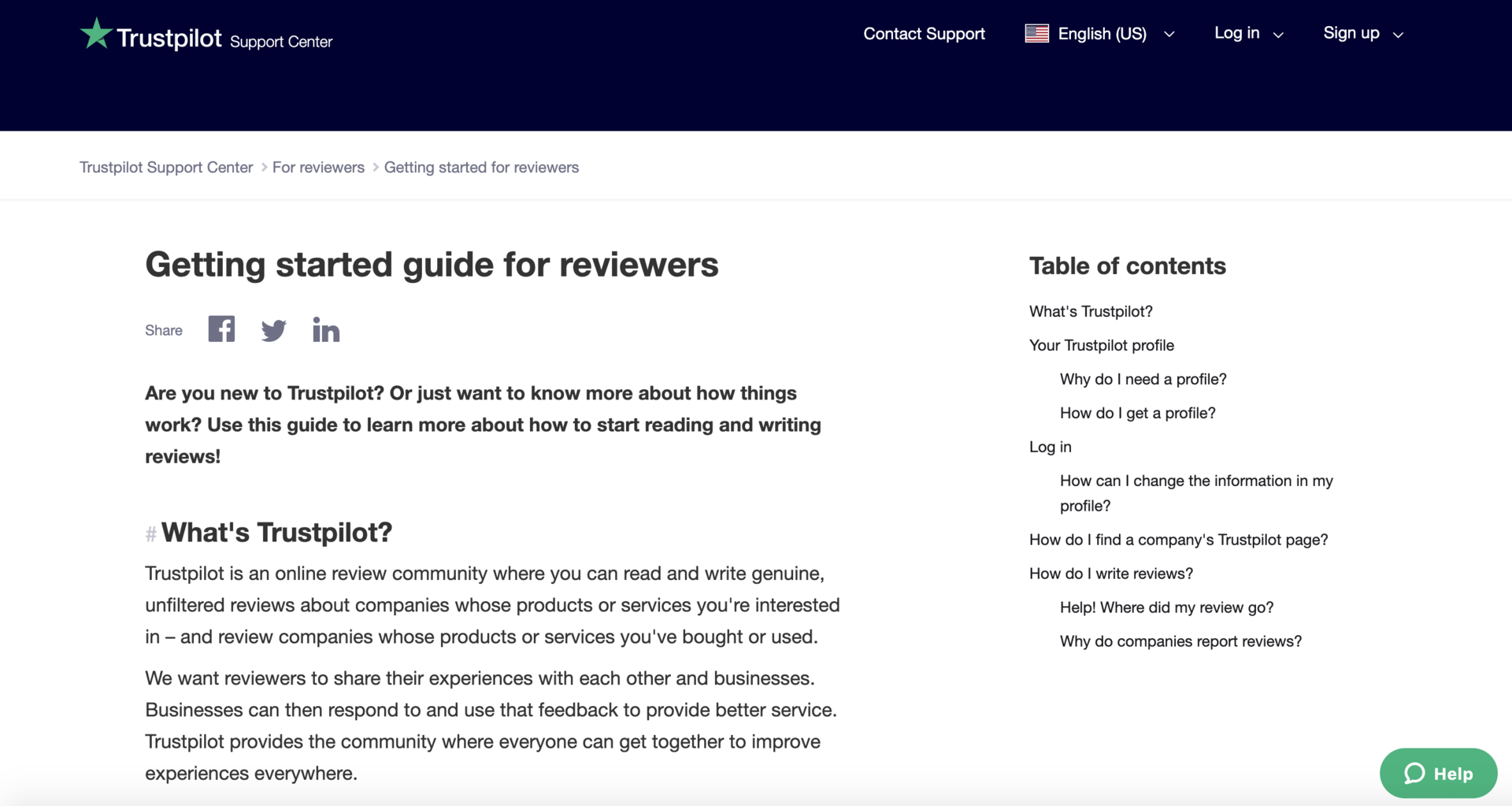
An onboarding flow serves a specific function: it helps customers get started using a product or service. This template can include articles, long-form guides, and other resources such as videos. Having a well-designed onboarding flow in your knowledge base will help your support team stay focused on assisting customers with more complex problems. Even more important, it gives customers a positive first experience using your product or service. See below how Trustpilot leverages this template to help customers get started using its service.
- Troubleshooting guides

A troubleshooting guide template serves a particular need: it helps customers navigate a specific problem that requires multiple steps to resolve. They will usually include screenshots and video in a step-by-step format. Whether it is a customer accidentally locked out of their account or someone trying to use new, complex features, this template can be a lifesaver. It can also be a crucial source of help outside your normal support hours. For example, Khan Academy uses troubleshooting guides to help parents navigate the company’s tutoring services.
Top 13 knowledge base software for 2022
-
Zendesk
-
Wix Answers
-
Intellum Platform
-
Bloomfire
-
USU Knowledge Centre
-
Guru
-
Stack Overflow for Teams
-
Zoho Desk
-
Document 360
-
Notion
-
MangoApps
-
HappyFox
-
Slab
1. Zendesk
Zendesk offers knowledge management software that is simple to customise and use as an internal knowledge base, an IT knowledge base, a support agent-only knowledge base or a customer-facing FAQ tool. And because it is always available, customers and support agents can use the self-service portal to find the right information whenever they need it.
Zendesk offers a lean, confident content solution
Build out your knowledge base without sweating the details. Drafts save if you are in the middle of a work in progress, rich formatting makes articles easy to read and you can use pre-made templates to maintain content structure. And if you are building an internal knowledge base, content can easily be restricted to just certain groups.

Know how your knowledge base changes
Understand how your knowledge base content evolves over time. Get a list of events, so you can always be up to date with the latest changes, preserving the integrity of your content.

Speak the customer’s language
Zendesk makes knowledge management software that is simple to use and accessible for everyone. And the freedom to translate your articles into over 40 different languages provides a localised experience that is right for each customer.

Measure and improve customer support
Know what users are looking for and whether they are finding the right answers with built-in reports. Zendesk’s knowledge base software provides insights to expose gaps in content and helps identify areas where you need to create new KB content.

Features
- Customisable branding
- Categorisation
- SEO
Content management
- Full text search
Self-service portal
- Customer feedback
- Analytics
- AI and ML-enabled bots and search
- Community forums
2. Wix Answers

Before Wix Answers, there was (and still is) a product named Wix, which was designed to enable small businesses without technical resources to build a website. Wix Answers is based on a similar value proposition to provide intuitive knowledge base software for small to medium-sized businesses. Wix Answers is completely cloud-based and provides two different subscription plans.
Their knowledge base software is available for US$19 per user per month. And for an additional US$11 per user per month, Wix Answers also provides Call Centre, Live Chat and Ticketing System features.
Features
- Custom branding
- Categorisation
- Knowledge content management
- SEO
- Built-in-search
Self-service portal
- Customer surveys
- Reporting
- Discussion forums
3. Intellum Platform

If you are looking for knowledge management software and need to educate at least 10,000 employees, partners or customers, Intellum Platform is worth consideration. While it includes knowledge base software, the Intellum Platform is technically a learning management system. This means it helps companies host and facilitate educational courses, training programmes, or learning and development programmes.
The system is designed for various industries, including Technology, Manufacturing, Financial Services, Retail and Healthcare. To get pricing for Intellum, you will need to talk to a sales rep to get a customised quote.
Features
- Categorisation
- Content authoring tools
- Real-time collaboration tools
- Design customisation
- Full text search
Self-service portal
- Customer feedback
- Analytics
4. Bloomfire

Bloomfire centralises company knowledge in a single, searchable platform, helping support agents consistently deliver high-quality, contextually relevant service. Bloomfire features several appealing capabilities such as AI-powered search, crowd-sourced FAQs and rich media compatibility.
The platform also mimics social media by allowing users to interact with posts by liking, sharing, commenting on or following them. Bloomfire pricing starts at US$15 per user per month for up to 50 users. You can access more affordable per user rates if you have more than 50 users.
Features
- Customisable branding
- Auto-tagging content
Content management
- Full text search
Self-service portal
- Customer feedback
- Usage and content reporting
- Zendesk integration
- API Access
- AI-enabled search
Learn more about Zendesk app for Bloomfire
5. USU Knowledge Centre

USU Knowledge Centre is a cloud-based knowledge management software. The software provides a standard editing tool and supports decision tree documents and basic long-form articles. Knowledge Centre has a powerful search feature and collaboration tools that help agents escalate issues. It also helps facilitate a consistent editorial process with custom workflow approvals for content creation, updates and removal.
Knowledge Centre integrates with SAP, Microsoft Dynamics, Zendesk and Salesforce. If you would like to know the pricing for Knowledge Centre, you will need to contact the vendor directly for a custom quote.
Features
- Customisable branding
- Categorisation
- Knowledge content management
- Full text search
Self-service portal
- Usage tracking and analytics
- Discussion forums
- Voicebots
- Chatbots
6. Guru
.jpg)
Similar to other tools, Guru’s knowledge management system enables your team to create, share, access and update information. But what sets Guru apart is that it fits within your team’s existing workflow by unifying contextually relevant, verified information with the tools you are already using, such as Teams, email, Slack and your CRM.
Also, since Guru uses AI to surface contextually relevant knowledge, suggestions improve over time based on individual and organisation-wide patterns. And while Guru is designed for use as an internal knowledge base, you can use their API to publish content externally. Prices for Guru range from US$5 to US$20 per user per month.
Features
-
Categorisation
Content management
- Built-in text search
- ML-enabled bots
- Community forums
Learn more about Zendesk app for Guru
7. Stack Overflow for Teams
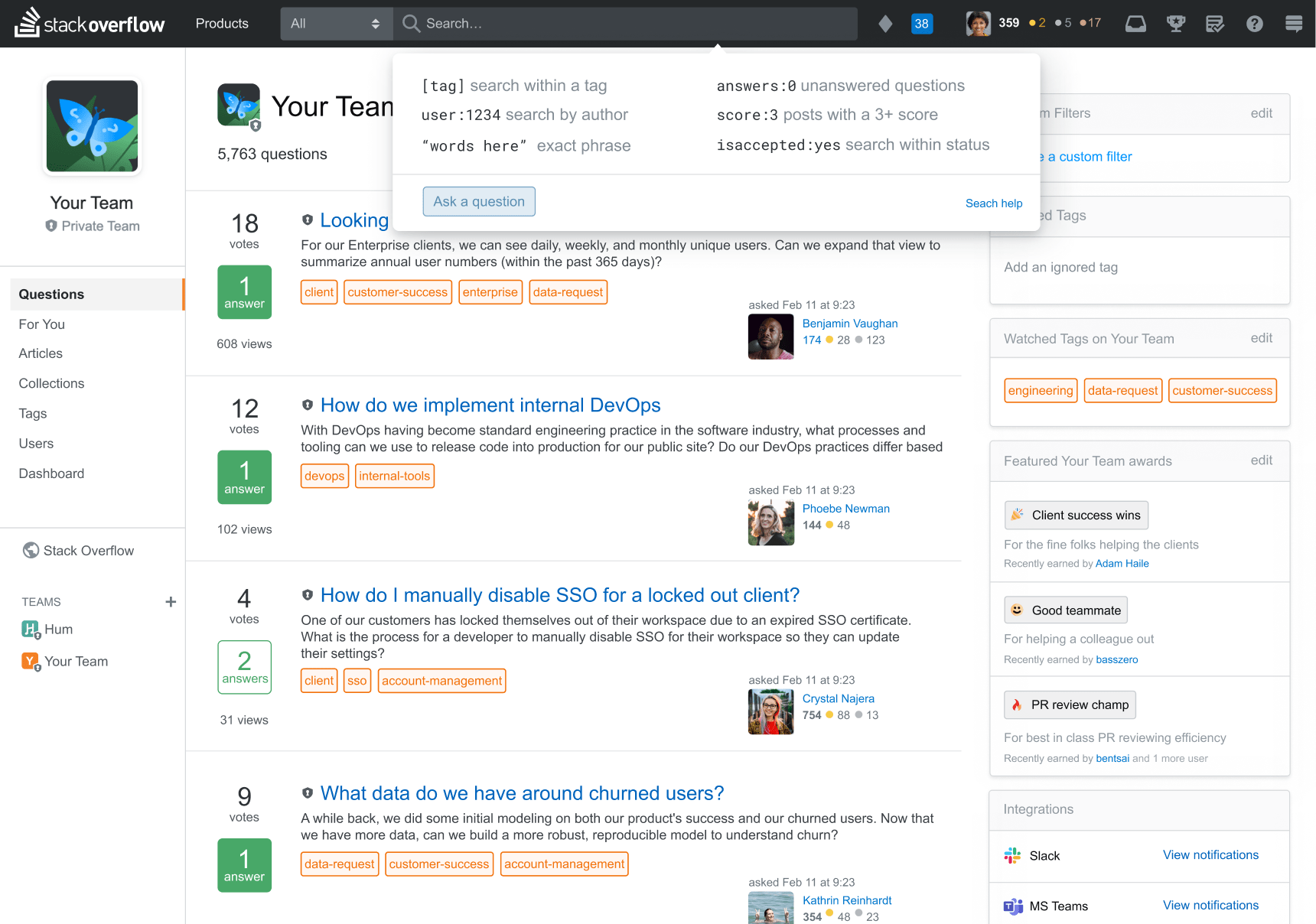
Its answer ranking system, trusted brand, intuitive interface and huge community has made Stack Overflow a household name for developers. But Stack Overflow for Teams is taking their brand a step further by offering Stack’s signature question and answer interface for private use.
Stack Overflow for Teams integrates with Jira, GitHub and Microsoft teams as well as Slack and Okta. The Business plan offers content grouping, analytics and long-form knowledge articles for US$12 per user per month.
Features
- Cataloguing and categorisation
- Knowledge base management
- Document management
- Remote support
Self-service portal
- Community forums
8. Zoho Desk
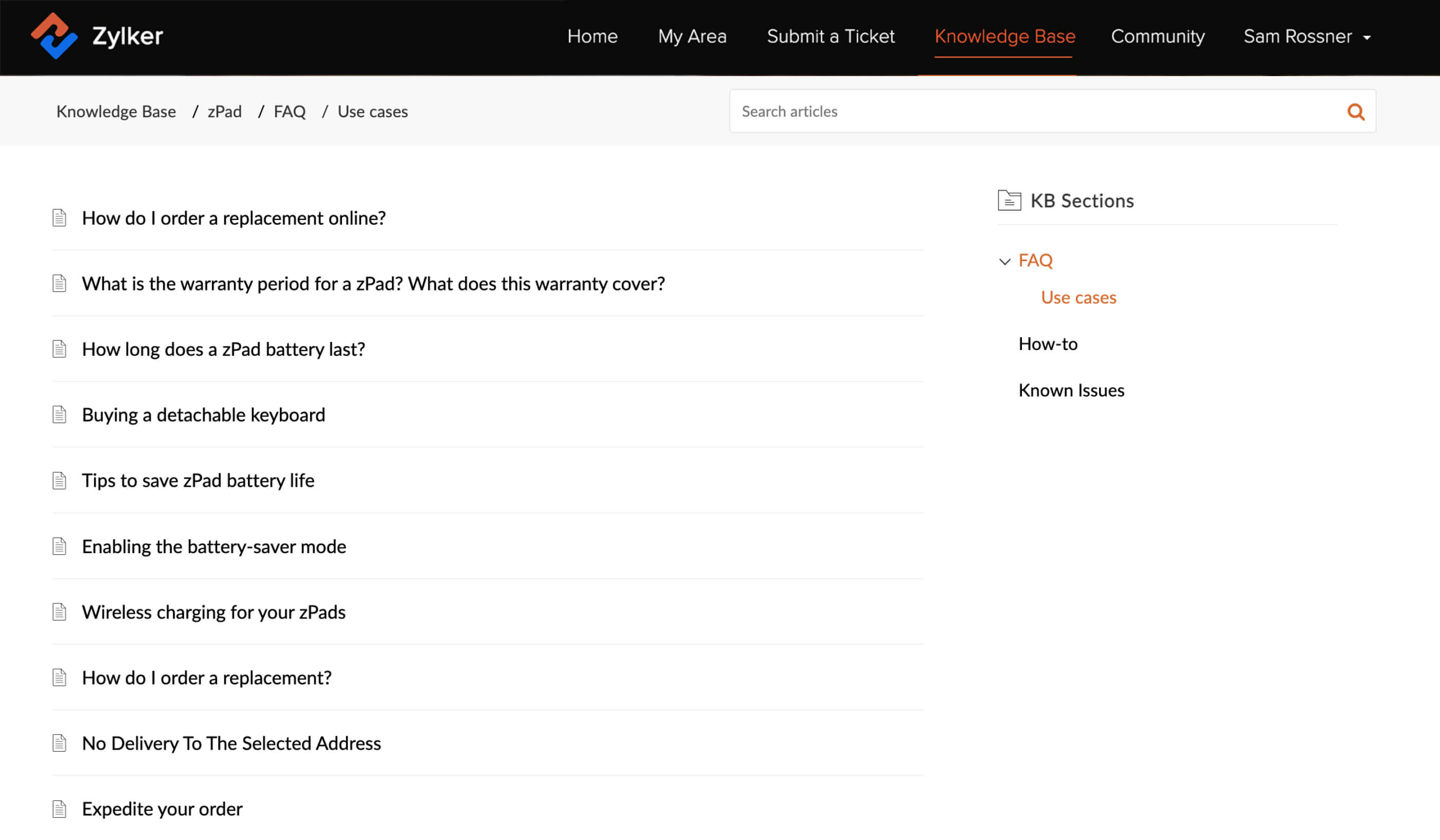
In addition to providing a knowledge base, Zoho Desk also includes a ticketing system and helpdesk solutions. But even on its own, Zoho Desk’s knowledge base is a solid option. The system is easy to use for writers and editors, providing separate categories for how-to articles, FAQs and more.
Zoho Desk’s knowledge base is also flexible; users can set up portals for different customers (internal and external) and use whatever logo or branding they need. Pricing for Zoho Desk starts at US$18 per user, per month.
Features
- Portal customisation
- Secure access
Content management
- Text search
- Ticket submissions
- Customer feedback
- Domain mapping
- Advanced reporting
- Chatbots
- Forums and communities
Learn more about Zendesk app for Zoho Desk
9. Document 360
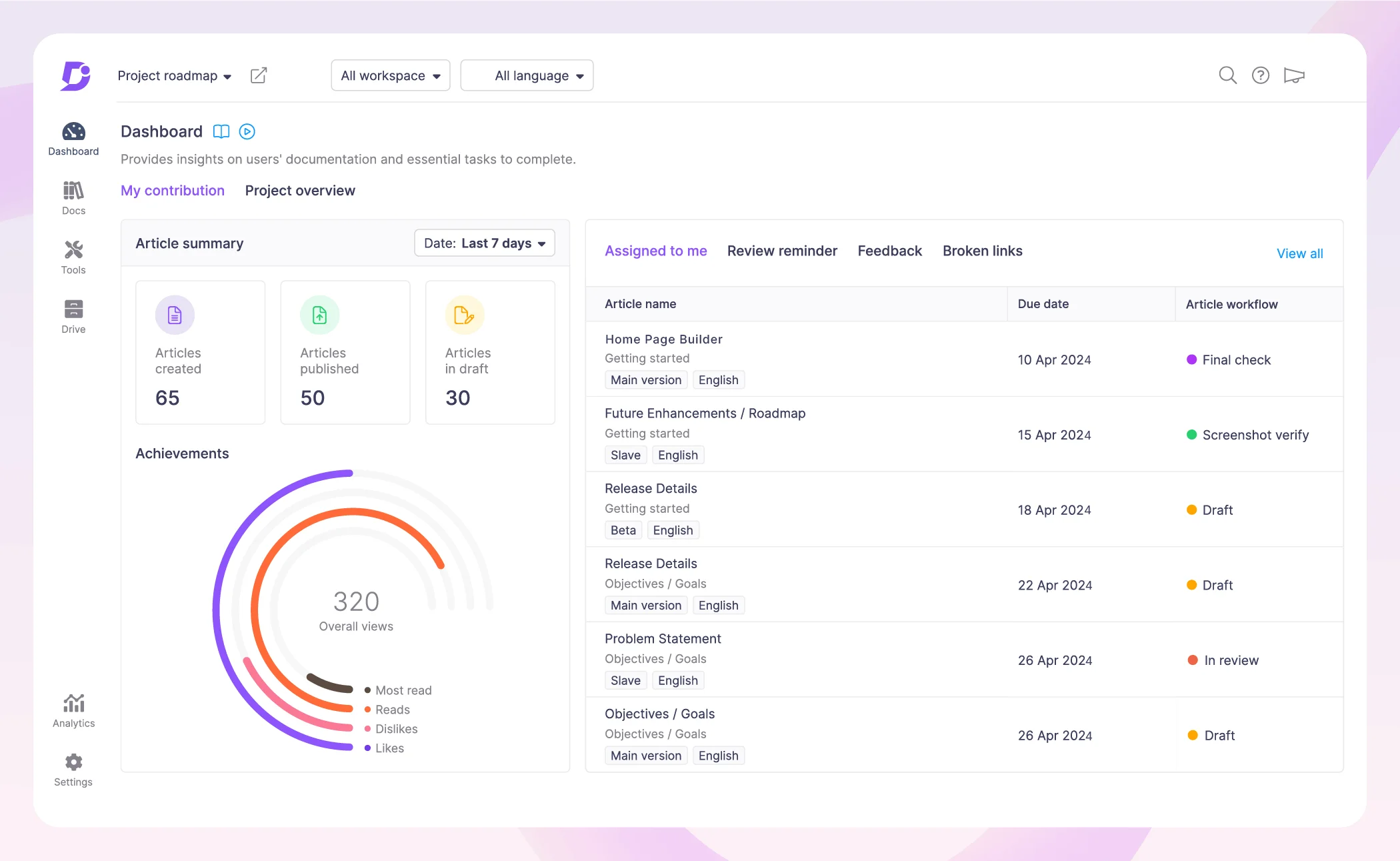
Using Document 360, you can create self-service knowledge bases for your customers and private knowledge bases for your team. Its most powerful features include real-time search, version control, robust categorisation and a file manager. Document 360 also has a clean interface and seamless user experience.
Also, this knowledge base software includes a markdown editor, which can simplify content creation. Pricing for Document 360 ranges from US$49 to US$299 per month. The most affordable plan includes two team accounts and one knowledge base and supports up to 10,000-page visits per month and 5GB of storage.
Features
- Category manager
- Markdown editor
- Analytics
- User feedback
- SEO
Content management
- Knowledge base search
Self-service portal
- Community forums
- Secure file management
Learn more about Zendesk app for Document 360
10. Notion
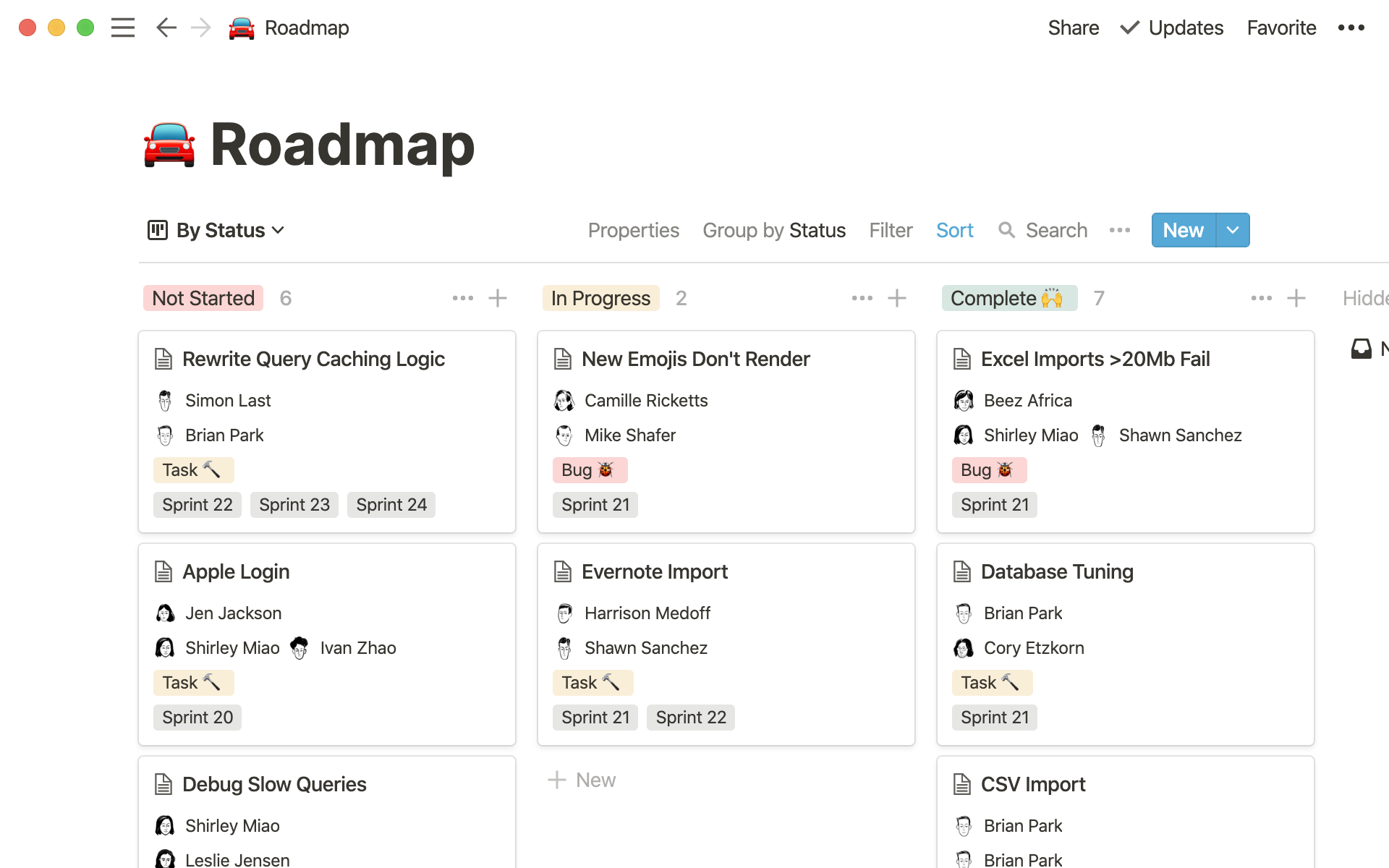
You can use Notion as a database, notepad, project management tool and/or a collaborative writing space. Because it is so flexible, Notion is a great option for creating an internal knowledge base. And while it does not have many built-in features specific to most customer-facing knowledge base systems, you can technically use Notion to create a self-service knowledge base.
All that said, Notion’s flexibility makes the learning curve fairly steep. It will be completely up to you to determine how your knowledge base is organised and labelled. Notion plans range in price from its basic, free version to US$8 per team member per month.
Features
-
Categorisation
Content management
- Built-in search
- Markdown editor
11. MangoApps

Like Notion, MangoApps lends itself more easily to internal knowledge bases. The software is mainly designed to centralise employee workspaces so that customer information is consistent and available when and wherever needed. MangoApps also provides a feature called Libraries, which allows companies to organise files, hyperlinks and other resources into a digital index.
MangoApps’ design is similar to social media apps with threads, comments and groups. And it provides a broad range of integrations and branding customisations. To get pricing for MangoApps, you will need to talk to one of their representatives for a custom quote.
Features
- Brand customisation
- Categorisation
Content management
- Full text search
Self-service portal
- Customer surveys
- Customer forums
Learn more about Zendesk's integration with MangoApps
12. HappyFox
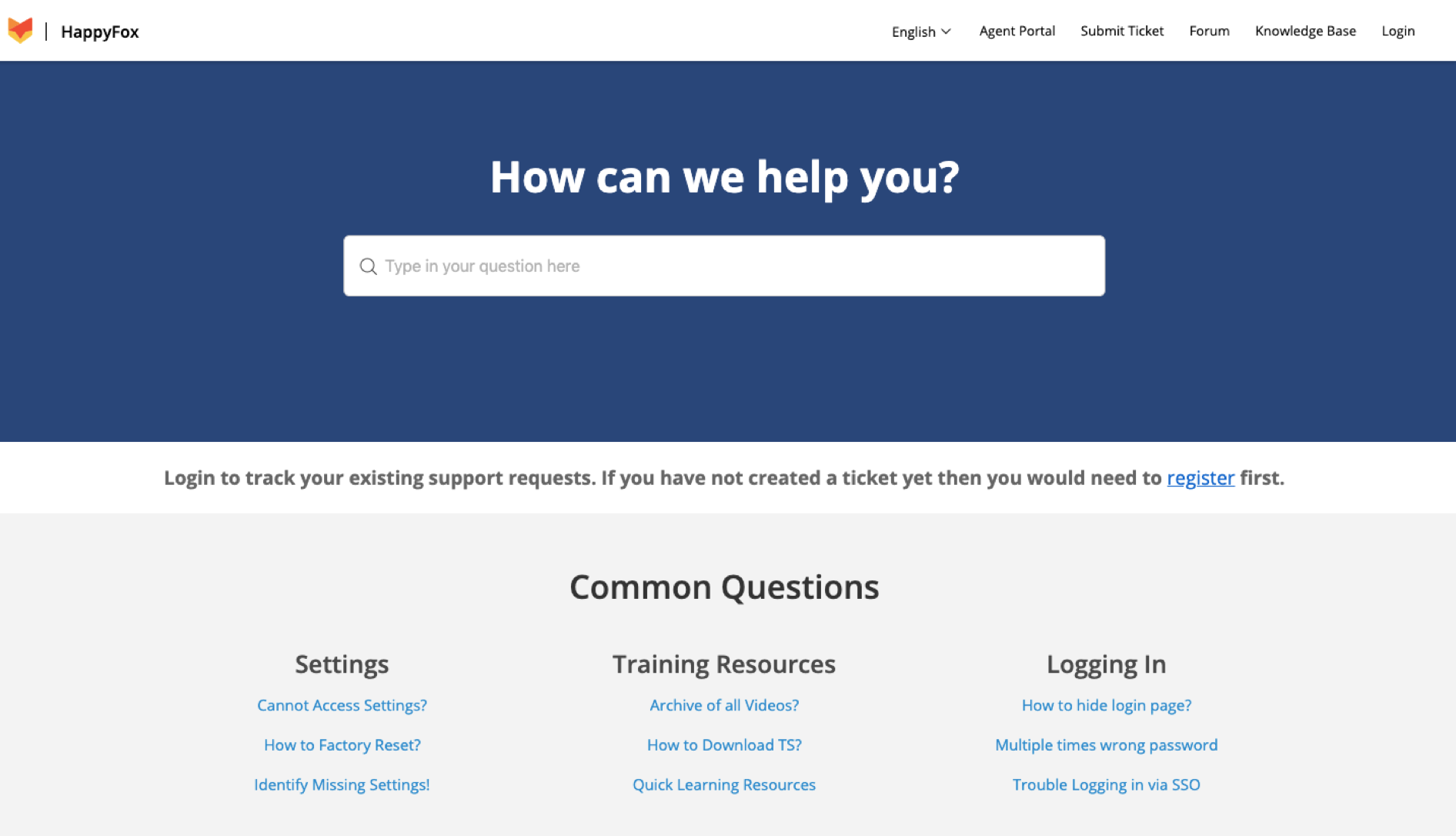
HappyFox is a cloud-based CRM that provides knowledge management systems for many different industries. Their knowledge base provides a host of easy-to-use, powerful capabilities such as multi-brand user portals, feedback collection, and separate internal/external knowledge management systems.
Where HappyFox excels in features, it lags in price and integrations. There is also no free option for you to get a feel for the software. And their price tiers range from US$39 to US$99 per user per month, so you will have to pay to try it. Still, as a mainstay in the customer service software industry, HappyFox is worth consideration.
Features
- Knowledge base customisation
- Categorisation
- Rich text editor
- External/internal search
- Auto-suggest
- Self-help portal
- Customer feedback
- Team collaboration tools
- Analytics
- Community forums
Learn more about Zendesk app for HappyFox
13. Slab

Slab bills itself as “a knowledge hub for the modern workplace” designed to unite all the places your team stores information and turn it into a single source of knowledge. Slab features a simple editing interface, powerful search, and solid integrations with popular tools like Google Docs, Slack and GitHub.
Slab does provide a free version and their paid plans range from US$8 to US$15 per user per month. If you would like to try Slab, you can use their free version with up to 10 users, though there will be some feature limitations.
Features
-
Categorisation
Content management
- Usage analytics
- Custom domains
- Private and public topics
- Full text search
Self-service portal
A summary of top 13 knowledge base software for 2022
Here is how our top 13 picks for knowledge base software stack up against one another at a glance:
Knowledge Base Software | Categorisation | Content Management | Full Text search | Self-service Portal |
|---|---|---|---|---|
|
✓
|
✓
|
✓
|
✓
|
|
✓
|
✓
|
✓
|
✓
|
|
✓
|
✓
|
✓
|
✓
|
|
✓
|
✓
|
✓
|
✓
|
|
✓
|
✓
|
✓
|
✓
|
|
✓
|
✓
|
✓
|
X
|
|
✓
|
✓
|
✓
|
✓
|
|
✓
|
✓
|
✓
|
✓
|
|
✓
|
✓
|
✓
|
✓
|
|
✓
|
✓
|
✓
|
X
|
|
✓
|
✓
|
✓
|
X
|
|
✓
|
✓
|
✓
|
✓
|
|
✓
|
✓
|
✓
|
X
|
How do you choose the right knowledge base software?
There is a lot to think about when it comes to choosing the right knowledge base software. The best way to start is to think about the nature of the information you want to organise and the people who will use that information.
Knowledge base software is the tool you will use to collect, maintain and serve the right information to the right person at the right time.
Once you have thought about that, consider the following before choosing your tool:
Flexibility and customisation
Your team, customers and existing tools are unique. And your knowledge base software is going to have to support that unique environment. If it is not flexible, you will be forced to patch together and duplicate information in and outside your knowledge base.
Also, if your software is not sufficiently flexible, you will not be able to use the apps, such as chatbots or CRMs, that make knowledge bases even more powerful. So look for knowledge base software that offers an API as well as native integrations to lots of popular tools.
Easy to find and share
Even if your knowledge base is as complete as it can be, its value depends on both agent’s and customer’s ability to find and share information quickly. This makes powerful search and thoughtful categorisation features an especially important piece of providing better service and greater agent productivity.
But discovery alone is not enough. Knowledge base content also needs to be easy to share with customers and other agents. So look for knowledge management systems that combine discoverability and shareability, and you will be ahead of the game.
Seamless collaboration
Much of what makes an effective knowledge base is the ability for multiple employees to contribute. This creates a broader scope of learning for your knowledge base and it makes it easier to incorporate insights gained on the frontlines of customer service into your KB.
So make it a priority to find software that is intuitive and easy to use for your team. If possible, start with a free trial so you can determine how readily your team will adopt the software. The more comfortable your employees are using the software, the more likely they will be willing to contribute.
Frequently asked questions on knowledge base software
Try knowledge base software for free
Zendesk is a smart knowledge base that helps you organise your institutional knowledge and put it to work as useful content in the format of a searchable database. Put simply, with Zendesk’s knowledge base, you can quickly create and tailor a help center to your specific needs.
And if you are already using Zendesk’s ticketing system, you can seamlessly integrate the Zendesk knowledge to level up your customer service operation. So give Zendesk a try and start providing your customers with improved self-service and your agents with greater efficiency and faster resolution.
Tap into more knowledge
Keep exploring the world of community software and knowledge bases.
